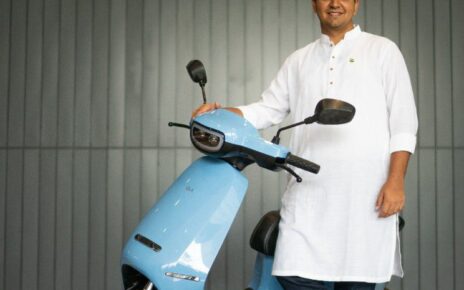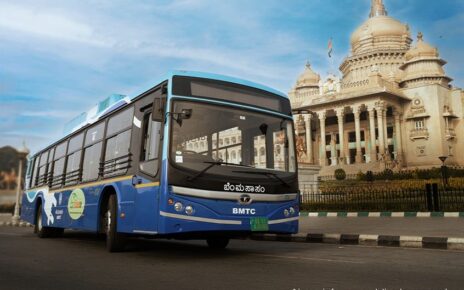
In this exclusive interview, Kartikey Hariyani, Founder & CEO of ChargeZone, speaks with N. Balasubramanian about the company’s remarkable growth journey, its high-speed charging focus, tech-driven operations, and strategic OEM alliances. He also shares insights on commercial EV adoption, TCO parity, and ChargeZone’s ambitious goal to deliver 1 TWh of energy in the coming years.
As India’s electric mobility wave gathers momentum, ChargeZone stands tall as a pioneer enabling this transition from fossil fuel to clean energy. Spearheaded by Kartikey Hariyani, the company has built a formidable presence as one of the country’s leading EV charging infrastructure providers, having already served over 200,000 retail and 10,000 B2B customers across key regions.
Reflecting on the company’s growth, Kartikey describes the journey as “nothing short of extraordinary,” dating back to 2018 when the Government of India clarified that EV charging was outside the ambit of electricity distribution regulations. “That clarity gave us the tailwind we needed. We saw EV charging not as a capex-heavy utility business but as a scalable service model,” he shares.
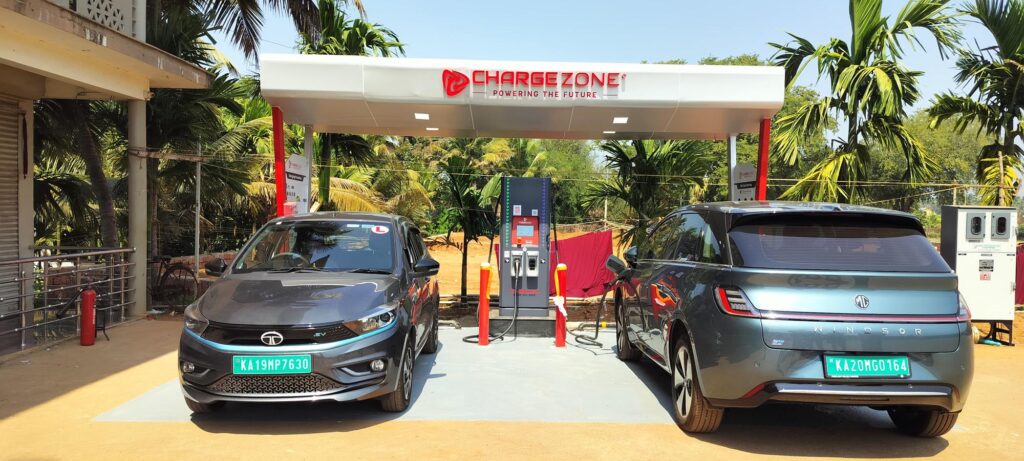
Simplified Business Model, Powerful Tech Backbone
At the core of ChargeZone’s growth lies a simplified, utility-style business model and robust technological backbone. “We decided early on to charge customers per unit consumed, just like a petrol pump sells diesel or petrol. The kilowatt-hour is our currency,” says Kartikey.
The company’s proprietary ChargeCloud platform ensures seamless operation across its network. “We’ve built our own connected charging OS, allowing us to monitor, manage, and scale our network efficiently. Uptime and reliability are non-negotiable – our focus is on solving not just range anxiety, but reliability anxiety too.”
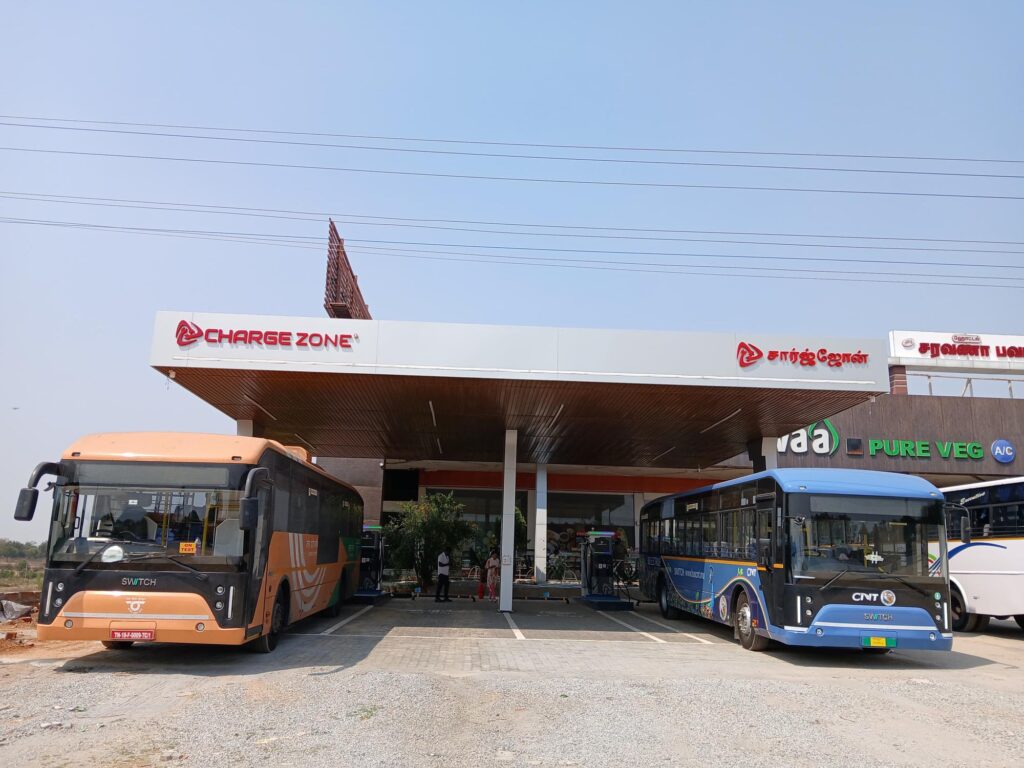
This tech-led approach is complemented by strategic decisions in market focus. Unlike many players who chased the volume game in 2W/3W charging, ChargeZone deliberately chose to avoid that segment. “The throughput from 2W/3W charging is simply too low to justify public charging infra. We’ve always focused on high-speed charging for 4Ws, buses, and commercial fleets where the unit economics work,” Kartikey explains.
Segment Focus and Strategic Partnerships
ChargeZone’s network is widely used across segments, with revenues nearly evenly split between B2B (fleet operators, logistics companies, STUs) and B2C (personal EV users). The company expects to cross 10 GWh of monthly energy throughput soon and is eyeing a 10x scale-up over the next four years.
“From day one, we have stayed focused on the four-wheeler and larger vehicle categories. This focus allowed us to build high-speed charging networks across cities and highways and forge deep partnerships with OEMs,” Kartikey adds.
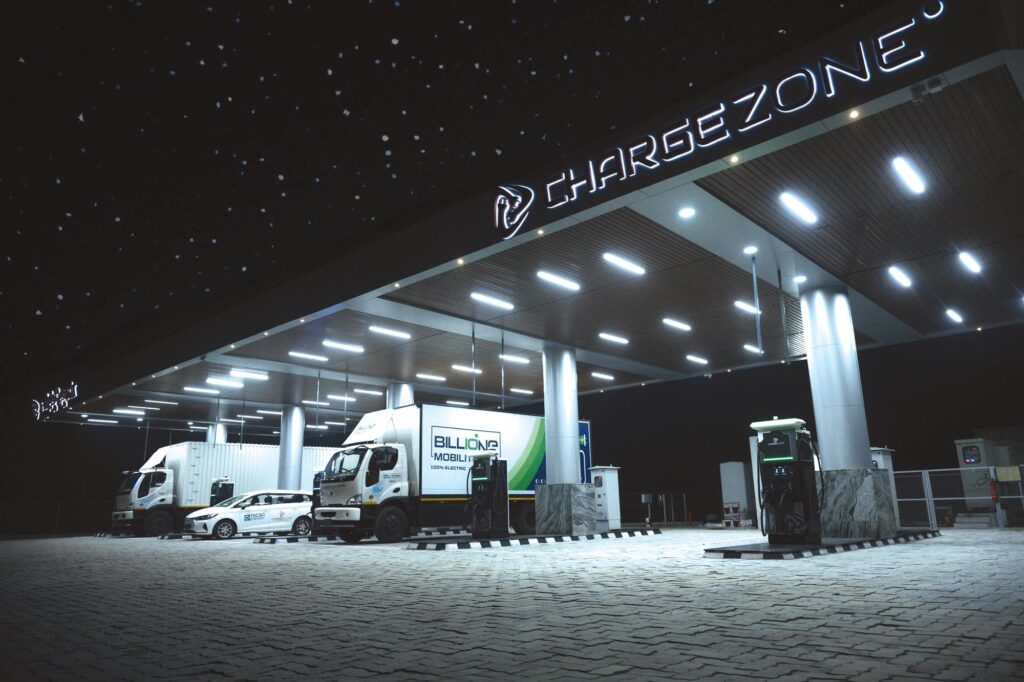
These partnerships include names like Hyundai, MG, and Suzuki, where co-branded and API-integrated solutions are helping OEMs provide seamless charging access to their customers. On the infrastructure side, ChargeZone is leading the effort to create a national roaming network – a platform where multiple charge point operators interconnect to enable a unified charging experience.
“We don’t see other charging companies as competitors anymore. The goal is to enable a single-app, single-login ecosystem for users. That’s how real scale and convenience will come,” says Kartikey.
Commercial Vehicle Opportunity and the Role of ESG
While passenger EVs continue to dominate headlines, ChargeZone is bullish on the electrification of commercial vehicles. “Electrification in the CV segment is just beginning. We’re seeing encouraging traction in mid-mile and last-mile delivery, with strong interest from fleet operators driven by ESG goals.”
This includes ChargeZone’s own subsidiary, Billion Electric Mobility, which has deployed electric trucks with major players such as Amazon and others. “For large corporates, ESG targets are as much a driver as cost savings. But the good news is – Total Cost of Ownership (TCO) parity with diesel is coming fast,” he says.
Kartikey estimates that the current cost gap stands at 12–14%, and parity could be reached as early as mid-2026. “Electric logistics is on the verge of outpacing diesel. The tipping point is not far.”
Challenges, Innovations, and the Road Ahead
Despite strong growth, challenges remain. According to Kartikey, “The pace of EV adoption is not where we hoped it would be. We expected 400–500% growth, but we’re tracking around 100–120%. The cost of EVs and charging time are still key barriers.”
But he remains optimistic. New innovations, such as dual-port charging and improvements in battery C-rating, are helping reduce charging times. “Today’s intercity buses can add significant range with just a 20-minute pit stop. We expect more such innovations from Indian OEMs that address India-specific use cases.”
Looking ahead, Kartikey’s ambition is clear: “We aim to become a 1 TWh charging network operator by the end of the decade. Electrification is no longer an aspiration – it’s an imperative.”
ChargeZone – Electrifying Stats
- 200,000+ retail users and 10,000+ trade customers served
- EV charging revenue split: ~40–50% from B2B and B2C each
- Targeting 10 GWh energy throughput per month; aiming for 10x growth in 4 years
- Focus on 4W, buses, and commercial vehicles
- Cost gap with diesel currently at 12–14%; parity expected by mid-2026
- Targeting 1 TWh cumulative energy delivery by end of decade



